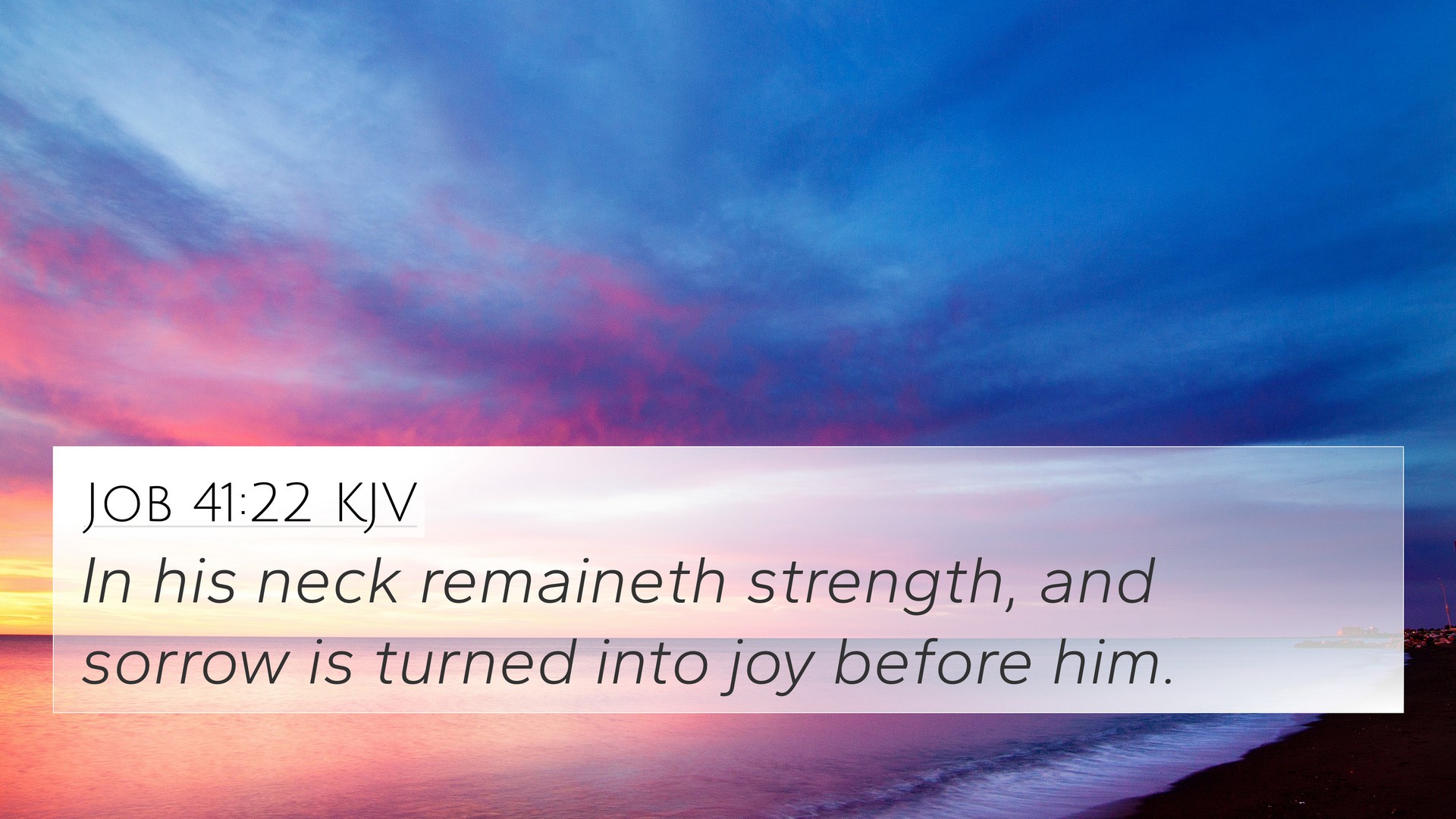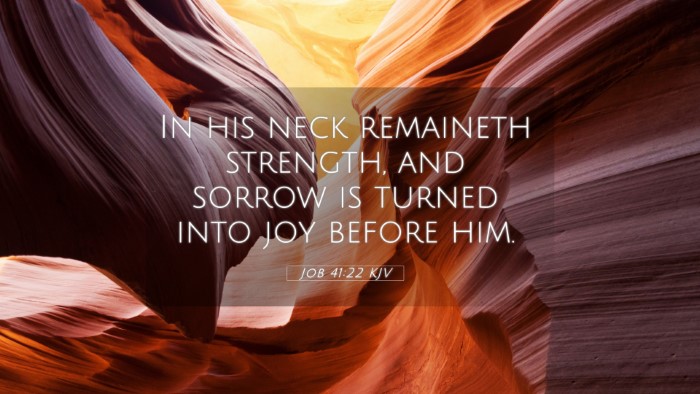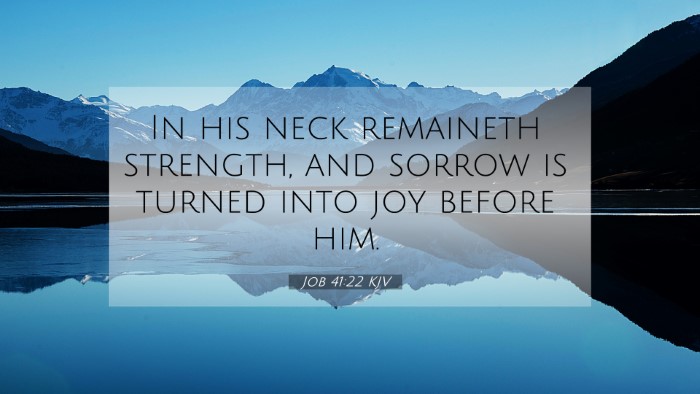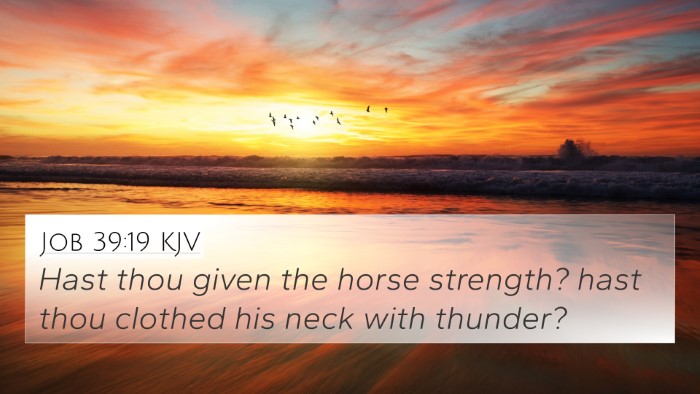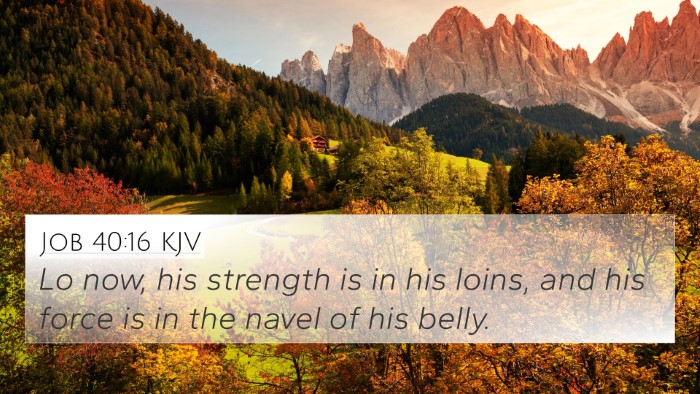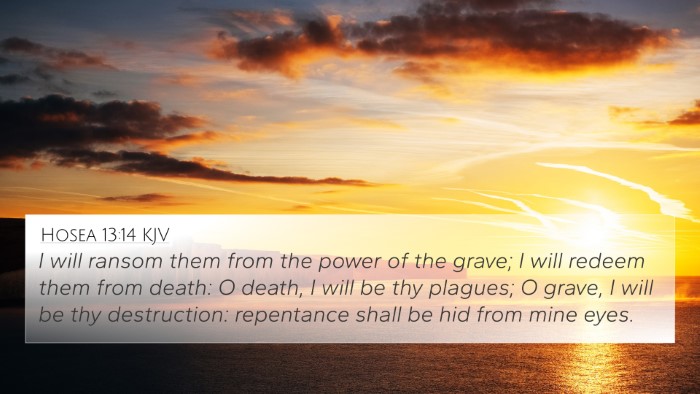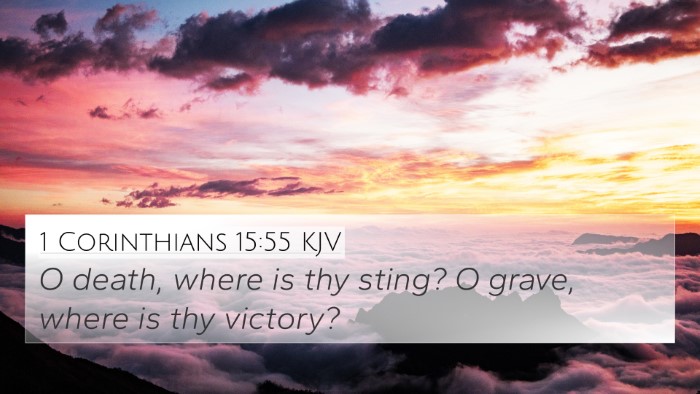Understanding Job 41:22
Job 41:22 states: "In his neck remaineth strength, and sorrow is turned into joy before him." This verse speaks to the mighty and formidable nature of creation, specifically referring to the creature known as Leviathan. Through this lens, the verse highlights themes of strength, resilience, and the relationship between fear and joy.
Summary of Insights from Public Domain Commentaries
This analysis synthesizes insights from several renowned commentaries:
- Matthew Henry: He emphasizes the overwhelming strength of Leviathan, portraying it as a symbol of chaos and destructive power that is ultimately under God's control. Henry remarks on the creature's terrifying nature that inspires fear, yet this fear can paradoxically lead to a recognition of God's sovereignty.
- Albert Barnes: Barnes notes the metaphorical implications of the neck of Leviathan representing both power and pride. He interprets the "sorrow turned into joy" as a reflection of God's ability to transform dread into reverence and admiration, inviting readers to see the majesty and greatness of God's creation.
- Adam Clarke: Clarke points out the vivid imagery and poetic nature of the verse. He suggests that it underscores the importance of understanding the world around us, acknowledging both the beauty and terror of creation. Clarke also connects this understanding to the behavior of humans in the presence of immense power, resulting in a blend of fear and awe.
Thematic Connections
Job 41:22 connects with several overarching themes within the Bible:
- The Majesty of Creation: The description of Leviathan underlines God's creative power and the awe it inspires.
- Divine Sovereignty: The verse illustrates God's ultimate authority over all beings, whether they evoke fear or joy.
- Transformation: The idea that sorrow is turned into joy is a recurring theme, showcasing God's ability to change our perspectives and emotional states.
Cross-References
Below are some related Bible verses that provide deeper insight into Job 41:22:
- Psalms 104:26: "There go the ships: there is that leviathan, whom thou hast made to play therein."
- Isaiah 27:1: "In that day the Lord with his sore and great and strong sword shall punish leviathan the piercing serpent."
- Proverbs 20:1: "Wine is a mocker, strong drink is raging: and whosoever is deceived thereby is not wise." (Relating to the sobering reality of creation).
- Isaiah 40:12: "Who hath measured the waters in the hollow of his hand..." (God's utmost control over creation).
- Job 12:7-9: "But ask now the beasts, and they shall teach thee; and the fowls of the air, and they shall tell thee: Or speak to the earth, and it shall teach thee..."
- Revelation 4:11: "Thou art worthy, O Lord, to receive glory and honour and power: for thou hast created all things..."
- Psalms 66:7: "He ruleth by his power for ever; his eyes behold the nations: let not the rebellious exalt themselves."
Connecting Job 41:22 with Other Biblical Texts
The connections between Job 41:22 and other scriptures can be categorized into various themes:
- Creation vs Chaos: This theme is prevalent in Job and echoed in Genesis, highlighting God's order over chaos.
- Suffering and Restoration: Job's storyline deals with immense suffering turned to divine restoration, resonating with themes found in the New Testament.
- Awe in Worship: Multiple scriptures point to the appropriate response of reverence and awe in light of God's creation.
Tools for Bible Cross-Referencing
Engaging in a deeper understanding of biblical texts can be enhanced through various tools:
- Bible Concordance: A helpful resource for locating terms and their occurrences throughout scripture.
- Bible Cross-Reference Guide: Guides that provide links between verses that discuss similar themes.
- Cross-Reference Bible Study: Methods to explore scripture parallels for enriching personal study.
Conclusion
Job 41:22 offers a profound contemplation on strength, fear, and divine sovereignty as represented through Leviathan. In understanding this verse, believers are encouraged to embrace the complex nature of creation and the transformational relationship between fear and joy in God’s presence. By utilizing tools such as cross-references, readers can discover thematic connections that enrich their scriptural understanding and faith journey.
